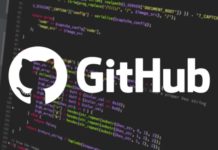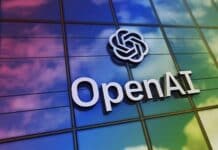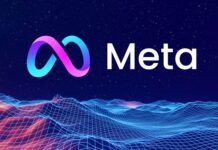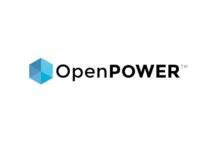Comcast Corporation is an American entertainment conglomerate. The company is committed to open source software and uses it to develop products, attract talent and evolve the technology. Nithya A. Ruff, head, Comcast Open Source Program Office, talks about Comcast’s open source journey, new projects, collaborations and much more.
Q Please share Comcast’s open source journey with our readers.
The involvement of Comcast in open source was a gradual process that evolved over time. The company eventually created two open source program offices, one for the NBC business and another for the cable side of the business.
Comcast began contributing to open source around 2006 when Jon Moore, chief software architect, made a patch contribution to Apache HTTP. He showed the management team that it made more business sense to have the patch incorporated into the main project than it was to maintain it separately.
Working with an interdisciplinary team, Moore worked to set up an open source advisory council, which consisted of legal and technical subject matter experts. They reviewed contributions and created internal guidelines focused on good open source practices and community building. In 2013, when they started tracking these contributions, they had 13. Since then, the contributions have been growing at a rapid pace.
Q How does Comcast contribute to the open source community?
We are committed to open source software. We use it to build products, attract talent, evolve the technology, and improve the customer experience. Beyond using open source technologies to build our products, we contribute actively to a wide range of open source and open standards groups including the Linux Foundation, the OpenStack Foundation, the Apache Foundation, the Cloud Foundry Foundation and the Internet Engineering Task Force, to name just a few. We also encourage and support our software engineers in open sourcing the projects they develop at Comcast.
We know the collective development ethos behind robust open source projects that makes our products better and more powerful. We are committed to being part of the global open source community now and into the future.
Q Can you tell us about the latest open source projects of Comcast?
We have introduced several new projects recently. Some of these are listed below.
- Infinite-File-Curtailer is a program that reads stdin and writes to a fixed size file.
- Paroduscl is a client library to interface with the parodus daemon.
- SyntaViz is a visualisation interface for analysing a very large corpus of natural language queries.
- Eslint-plugin-polymer-components are polymer-specific linting rules for ESLint.
- Vinyldns: This is a vendor-agnostic DNS front-end for managing DNS self-service across systems.
- Vinyldns-ruby: This is a Ruby gem containing methods to perform various API requests in vinyldns.
- Go-vinyldns is a Go client package for vinyldns.
- Vinyldns-cli is a command line interface for vinyldns.
- Pulsar-client-go is a Go client library for Apache Pulsar.
- TSB: Transitive Source Builder manages downstream, internal and custom builds dynamically.
- Ip4s: This lists IP addresses and similar network data types for Scala and Scala.js.
- SCAN: This is a tool for inspecting the contents of Apache Traffic Server caches.
Q Do Comcast employees follow any open source practices?
In 2016, we added an important component to our open source strategy in the form of our open source program office. The practice was supported by the company’s leadership team that wanted an organisation that would field questions, educate employees and create awareness.
The open source program office currently has three full-time people while relying on functional experts in legal, engineering, IT, PR, and more to help scale the program. The goal is to coach, guide, advise, recommend, and serve as a consultant to employees.
The function of the open source program office includes ‘the six Cs’: consumption, contribution, compliance, communication, collaboration, and competency-building.
The open source program office has two main goals:
- Make it easier for people inside the company to work in open source. Whether it’s the consumption of open source, contributing to open source, or collaboration with communities, foundations and organisations, the goal is to remove legal, process, tool, communication and awareness barriers.
- Be visible externally in open source and technology communities. Many people don’t know that Comcast is a technology company with thousands of developers, so we want to raise awareness and share what we’re doing.
Q Can you share some of the recent contributions made by Comcast to open source?
Comcast has open sourced a few projects, in addition to contributing significantly to existing open source communities, like OpenStack. Apache Traffic Control was started within Comcast and has been contributed to the Apache Software Foundation where it is currently in incubation.
Comcast is also instrumental in setting up an independent consortium named the RDK Management Project, which is focused on creating software to support advanced video and broadband experiences. The RDK software uses the Yocto build system to create a consistent layer such that everyone (from the semiconductor vendors to OEMs and ISVs) can use a consistent system and structure to build the content for set-top boxes and similar devices.
Comcast open sourced Trickster, a new tool, we developed to make Prometheus dashboards run smoother and faster. Trickster was developed internally and recently made available in open source. Written in Go, Trickster is a reverse proxy cache for the Prometheus HTTP APIv1 that considerably accelerates dashboard rendering times for any series queried from Prometheus.
Q Please tell us about Comcast’s collaboration with external organisations?
Comcast is a member of a number of foundations, as I mentioned earlier, including the Yocto Project, Linaro, the Linux Networking Fund, Cloud Native Compute Foundation and ToDo Group.
Through contributions to these organisations, Comcast has benefited from the goodwill that comes from participating in open source communities. Comcast’s contributions have also helped the company recruit new developers, who today want to work for companies that are good open source citizens. Comcast’s contributions in a variety of communities demonstrate that it is serious about its commitment to open source.
Q How do you make sure that your open source strategies are aligned with your business goals?
It is important to make sure that your company’s open source strategies are closely aligned with its business strategy. The open source office should really understand the goals of the company and enable them in its open source strategy. At Comcast, this strategic alignment allows the open source practice to remain aligned with the broader company goals, encouraging long-term success for the practice and the company as a whole.

















































































I am really happy to say it’s an interesting post to read . I learn new information from your article , you are doing a great job . Keep it up